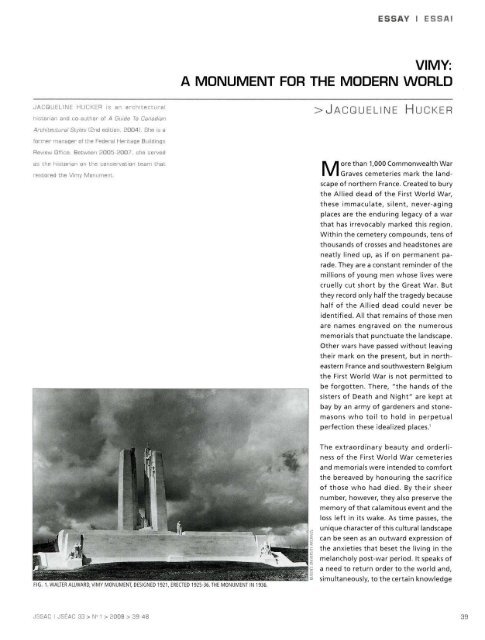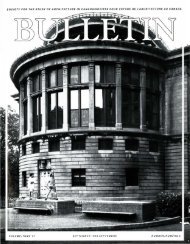CANADA - SEXTONdigital
CANADA - SEXTONdigital
CANADA - SEXTONdigital
You also want an ePaper? Increase the reach of your titles
YUMPU automatically turns print PDFs into web optimized ePapers that Google loves.
ESSAY I ESSAI<br />
VI MY:<br />
A MONUMENT FOR THE MODERN WORLD<br />
JACQUELINE HUCKER is an architectLwal<br />
histot'ian and co-author' of A Guide To Canadian<br />
>JACQUELI N E HU CKER<br />
Architectural Styles (2nd edition, 2 0041. She is a<br />
fom1er manager of the Fedet'al Heritage Buildings<br />
Revrew Office. Between 2005-2007, she served<br />
as the historian on tr1e conservation team tl1at<br />
t'estor-ed t he Vimy M on ument.<br />
More than 1,000 Commonwealth War<br />
Graves cemeteries mark the landscape<br />
of northern France. Created to bury<br />
the Allied dead of the First World War,<br />
these immaculate, silent, never-aging<br />
places are the enduring legacy of a war<br />
that has irrevocably marked this region.<br />
Within the cemetery compounds, tens of<br />
thousands of crosses and headstones are<br />
neatly lined up, as if on permanent parade.<br />
They are a constant reminder of the<br />
millions of young men whose lives were<br />
cruelly cut short by the Great War. But<br />
they record only half the tragedy because<br />
half of the Allied dead could never be<br />
identified. All that remains of those men<br />
are names engraved on the numerous<br />
memorials that punctuate the landscape.<br />
Other wars have passed without leaving<br />
their mark on the present, but in northeastern<br />
France and southwestern Belgium<br />
the First World War is not permitted to<br />
be forgotten. There, "the hands of the<br />
sisters of Death and Night" are kept at<br />
bay by an army of gardeners and stonemasons<br />
who toil to hold in perpetual<br />
perfection these idealized places.'<br />
FIG. 1. WALTER ALLWA RD, VI MY MONUMENT, DESIGNED 1921, ERECTED 1925-36. THE MONUMENT IN 1936.<br />
The extraordinary beauty and orderliness<br />
of the First World War cemeteries<br />
and memorials were intended to comfort<br />
the bereaved by honouring the sacrifice<br />
of those who had died. By their sheer<br />
number, however, they also preserve the<br />
memory of that calamitous event and the<br />
loss left in its wake. As time passes, the<br />
unique character of this cultural landscape<br />
can be seen as an outward expression of<br />
the anxieties that beset the living in the<br />
melancholy post-war period. It speaks of<br />
a need to return order to the world and,<br />
simultaneously, to the certain knowledge<br />
JSS AC I JSEAC 33 > N' 1 > 2008 > 39-48<br />
39
















